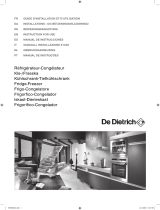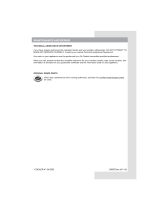
285690
The tray is especially handy for cold cuts, cheese, etc ...
The drawer is pulled out by lifting the front part slightly and then
pulling out. The handle may be moved sideways along with the
drawer.
Refrigerator compartments:
- top section: canned food, bread, wine, cake, etc.
- middle section: dairy products, readymade food, desserts,
juices, beer, TV-dinners, etc.
- bottom section: meat, meat products, delicatessen, etc.
- vegetable drawer: fresh fruit, vegetables, salads, etc. In appliances
without the ZERO’N’FRESH compartment, root vegetables,
potatoes, onions, garlic, tomatoes, tropical fruit, sauerkraut, turnip,
etc. should also be stored in the vegetable drawer.
- ZERO’N’FRESH COMPARTMENT: fresh meat, meat
products, fi sh, other seafood (shellfi sh), dairy products, salad,
fruit, vegetables, mayonnaise, sauces, etc.
Refrigerator door lining compartments:
- top/middle section: eggs, butter, cheese, …
- bottom section: beverages, cans, bottles, …
Recommended
distribution of food
Removable snack tray
• Proper use of the appliance, adequately packed food, correct
temperature and hygienic precautions produce substantial
impact on the quality of stored food.
• Always respect the best before date, printed on the packaging.
• Food to be stored in the refrigerator should be properly packed
as to prevent emission and/or reception of moisture and odors.
• Never store infl ammable, volatile or explosive substances.
• Beverages with high alcohol percentage shall be stored in
tightly sealed bottles in vertical position.
• Some organic solutions like volatile oils in lemon or orange
peel, acids in butter etc. can cause damage in prolonged
contact with plastic surfaces or gaskets for longer period of
time they can cause accelerated aging of the plastic material.
• Unpleasant odor inside the refrigerator is a sign that something
is wrong with food or that your refrigerator needs cleaning (see
chapter Cleaning).
Important precautions
and hints
14
Storage of food in the refrigerator

























